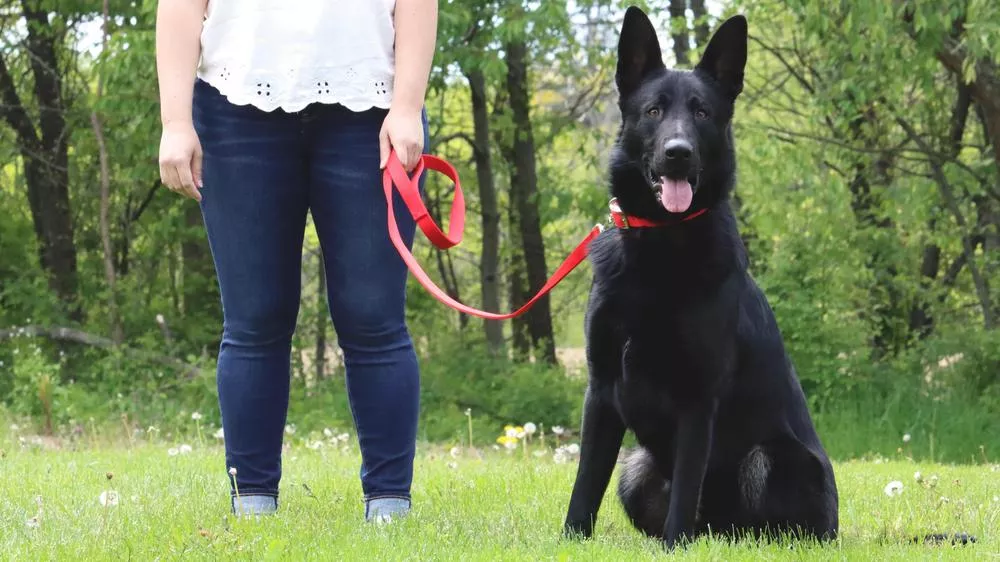Written by Morris Animal Foundation
Despite advances in our knowledge of heartworm disease, including improved diagnostic tests and safer, more effective treatments, heartworm remains a major health threat for pets. The statistics are grim - as of 2019, there are no heartworm-free states in the lower 48 United States. And, according to the American Heartworm Society, more than 1 million pet cats and dogs in the United States are infected with heartworms.
It's more important than ever for pet owners to know the latest information about heartworm disease to keep their pets safe from this serious infection.

Heartworms Have a Complicated Lifecycle
Heartworms (Dirofilaria immitis) were first identified in animals over 400 years ago. Until recently, heartworms were thought to be transmitted directly into the pet’s bloodstream via a mosquito bite. We now know that heartworm larvae (microfilariae) are deposited onto the surface of a dog’s or cat’s skin when the mosquito feeds. The larvae continue to mature on the skin, sometimes for several months.
Although dogs and cats share some similarities when it comes to the heartworm lifecycle, there are important differences, too.
If both male and female heartworms are present in an infected dog, they can mate and produce offspring. These tiny microfilariae are released into the dog’s blood system. Microfilariae are then ingested by female mosquitoes during feeding, undergo further maturation in the mosquito, and then are passed on when the mosquito feeds again. The transmitted larvae eventually enter the dog’s or cat’s body and finish maturing in their pet host. Ultimately, the mature adult heartworms reach the blood vessels of the heart and lungs.
Microfilariae can be found in the blood of infected pets as early as six months post-infection, although in most dogs, microfilariae are found seven to nine months post-infection. Microfilariae detection is a key component of diagnosis (more on this later).
Adult heartworms have a life expectancy of 5-7 years in dogs, and up to 2-3 years in cats. Unlike dogs, most worms in cats do not survive to the adult stage, and infected cats are less likely sources of additional infections.
Two factors influence larval molts and maturation: ambient temperature and the presence of Wolbachia pipientis, a bacterium that lives within the heartworm and is needed for normal maturation of heartworm larvae. The discovery of Wolbachia was a crucial factor in improving heartworm treatment efficacy and the successful elimination of D. immitis.

Diagnostic Tests Can Be Confusing
Even among heartworm experts, recommendations about diagnostic testing vary. We do know the earlier heartworm infections are detected in your pet, the better the chance of recovery with fewer complications.
The current guidelines from the American Heartworm Society recommend antigen and microfilaria testing be performed annually on all dogs, regardless of geographic location. For some pet owners located in areas with historically low heartworm infection rates, this might be new information. These tests also are helpful in diagnosing heartworm in cats.
Diagnostic tests for heartworm in pets can be broken down into two main categories:
- Primary diagnostic tests – microfilaria and antigen tests
- Secondary diagnostic tests – imaging and clinical pathology
Primary testing for microfilaria includes wet-mount direct examination and the modified Knott test or millipore filter test. Looking for microfilaria is important for diagnostic purposes and to assess microfilaria burden. In addition, some heartworm-infected pets can have antibody-antigen complex formation, resulting in false negative antigen tests. The presence of microfilaria can help confirm a diagnosis of heartworm infection in these patients.
Heartworm antigen tests are the most sensitive method for diagnosing heartworm disease in dogs. Antigen tests are almost 100% specific and identify dogs that are heartworm-infected but do not have circulating microfilaria. The tests are sensitive enough to detect a single female worm!
Antigen tests are more challenging in cats. That’s because, as mentioned earlier, cats tend to have far fewer worms in their systems, sometimes only having one or two adult worms compared to 30 or more in the dog. A positive antigen test in cats confirms heartworm infection; a negative test lowers the possibility of infection, but doesn’t 100% rule out infection.
Other diagnostic tests include imaging such as X-rays and heart ultrasound. Although both tests are incapable of definitively diagnosing heartworm infection, radiography and echocardiography are extremely useful for providing added support for a diagnosis of heartworm infection and assessing the severity once it has been diagnosed.
Further diagnostic tests, such as a complete blood panel, biochemistry profile and urinalysis, are important for evaluating a patient prior to treatment and for detecting underlying diseases that could affect treatment. However, these tests are not intended for diagnosing heartworm disease.

Best Friends? - Wolbachia and D. immitis
In the 1970s, scientists discovered bacteria living in the body of both adult and immature heartworms. It took another 20 years for scientists to understand that Wolbachia are not just passive passengers, but play a crucial role in a worm’s survival.
Because of this co-dependency, the discovery of Wolbachia has changed the way heartworm disease is treated in dogs. The American Heartworm Society recommends that doxycycline, an antibiotic that kills Wolbachia, be given for one month prior to treatment for adult heartworms in dogs.
Unfortunately, no drugs are approved for treating adult heartworms in cats due to drug safety issues. However, antibiotic therapy directed against Wolbachia leads to decreases in all stages of immature heartworms and might decrease numbers of adult heartworms in both dogs and cats, as well as reduce the potential for respiratory complications.
Treatment Concepts
Although living heartworms can trigger a significant immune response and damage to the blood vessels, dead and dying worms are even more destructive. Treatment of heartworm needs to be customized for each patient based on the presence or absence of clinical signs.
We can simplify our understanding of heartworm treatments by breaking it down into three categories:
- Adulticide treatment (including antibiotics against Wolbachia)
- Microfilaricide treatment
- Adjunct therapy
Melarsomine is the only adulticide approved by the FDA. Although other treatment regimens have been described, a three-dose protocol is recommended (2018) by the American Heartworm Society as the most effective drug for eliminating adult heartworms in dogs.
In contrast to older protocols, therapy aimed at killing microfilaria is initiated prior to adulticide therapy. Microfilarial burden must be determined prior to starting therapy, and in dogs with large numbers of microfilariae, pre-treatment with steroids and antihistamines is recommended.
The use of adjunctive therapy with prednisone and antihistamines, as well as supportive care measures, need to be individualized for each dog. One month after completion of adulticide therapy, dogs should resume appropriate heartworm chemoprophylaxis and be retested for microfilariae. Another antigen and microfilaria test should be performed six months after the last dose of melarsomine to monitor treatment success.
Finally, it's important for dog owners to understand that best heartworm treatment practices are constantly under review by experts, and recommendations can and do change over time. Your veterinarian can help navigate the options for therapy and prevention.

Treatment for Cats Is Different
As noted, no FDA-approved drugs exist for heartworm infections in cats. Heartworm-positive cats with mild symptoms respond well to small doses of prednisone to reduce inflammation. Cats with more severe infections will require supportive therapies, including intravenous fluids, drugs to treat lung and heart symptoms, antibiotics and, in some cases, surgical removal of the heartworms.
Prevention Is Still the Best Medicine
Although treatment of heartworm disease in dogs and cats has come a long way in the last 30 years, prevention is still best. There are many choices when it comes to heartworm preventives. It’s important to work with your veterinarian to decide which is best for your pet. Have your pet tested annually to ensure that the heartworm preventives are working and providing optimal protection against infection. As a bonus, many medications for heartworm may prevent other parasites as well.
Controlling exposure to mosquitoes can seem like a hopeless task, but there are steps owners can take to decrease their pet's contact with disease-carrying mosquitos. Eliminate any areas of standing water on your property and limit your pet's access to these areas away from home. Gentle winds disturb mosquitoes, so placement of fans, even outside on a porch or patio, can repel these and other insects. Keep your pet indoors during peak mosquito feeding times (typically at dawn and dusk).
You can find more details and strategies for treating heartworm-infected dogs and cats at the American Heartworm Society.
Additional Resources
The American Heartworm Society
Morris Animal Foundation's Fresh Scoop podcast: Unraveling the complexities of heartworm disease

